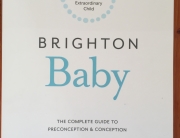 Taking folic acid and iron supplements during pregnancy may reduce infant mortality up to age 7, suggests new research from the Johns Hopkins Bloomberg School of Public Health. Supplements of iron and folic acid reduced infant mortality by 31 per cent, according to findings published in the American Journal of Epidemiology.
Taking folic acid and iron supplements during pregnancy may reduce infant mortality up to age 7, suggests new research from the Johns Hopkins Bloomberg School of Public Health. Supplements of iron and folic acid reduced infant mortality by 31 per cent, according to findings published in the American Journal of Epidemiology.
Furthermore, the supplements reduced the prevalence of low birth weight by 16 per cent and the prevalence of maternal anaemia during pregnancy and after the birth period by 50 per cent. “To our knowledge this is the first time the long-term effects of maternal iron-folic acid supplementation on childhood survival have been examined,” said lead researcher Parul Christian. “
“A reduction in mortality resulting from an intervention, such as iron-folic acid supplementation during pregnancy, provides a new and previously unreported evidence of benefit to offspring during childhood,” added Christian.
There is a policy, but it isn’t working. About 40 per cent of pregnant women worldwide are estimated to be anaemic. Despite the existence of an international policy for antenatal iron-folic acid supplementation, women in many developing countries fail to receive the necessary micronutrients, say the researchers.
Almost 5,000 pregnant women in rural Nepal were recruited to take part in the randomized, double-blind, controlled trial. Women were divided into five groups: One group received folic acid only, the second group received folic acid plus iron, the third received folic acid plus iron plus zinc, the fourth received multiple micronutrients, and the final group received vitamin A and acted as the control group.
Out of the 4,130 babies born alive, 209 died in the first 3 months and 8 were lost to follow-up. Of the 3,761 remaining, the researchers report that 150 died between the ages of 3 months and 7 years, while 152 were lost to follow-up.
Children of mothers receiving the folic acid plus iron supplements had the lowest mortality rate of 10.3 per 1,000 child-years from birth to age 7 years, compared to 13.4, 12.0, 14.0, and 15.2 for the folic acid, folic acid plus iron plus zinc, multiple micronutrients, and control groups, respectively.
“In a setting where maternal iron deficiency and anaemia are common, we found a 31 percent reduction in childhood mortality due to maternal antenatal and postnatal supplementation with iron-folic acid compared to a control,” said Christian. The researchers concluded that such results provide additional motivation to increase global programmes for antenatal iron and folic acid supplementation.
Commenting on the research, Professor James Tielsch at the Bloomberg School of Public Health said: “Supplementation with iron and folic acid during pregnancy is a common policy in many low- and middle-income countries, although implementation is typically not very good. This policy has been motivated primarily by the beneficial effects of supplementation on anaemia in pregnancy and maternal iron stores.
“Following their previous demonstration that iron-folic acid supplementation during pregnancy increased birth weight, Christian, et al., have now provided unique data on the critical importance of this intervention for improving child survival. This strong evidence should reenergize programs for the delivery of this critical intervention for maternal and child health,” added Tielsch, who was not involved in this research.
Antenatal and postnatal iron supplementation and childhood mortality in rural Nepal: a prospective follow-up in a randomized, controlled community trial.
The long-term benefits of antenatal iron supplementation in child survival are not known. In 1999-2001, 4,926 pregnant women in rural Nepal participated in a cluster-randomized, double-masked, controlled trial involving 4 alternative combinations of micronutrient supplements, each containing vitamin A. The authors examined the impact on birth weight and early infant mortality in comparison with controls, who received vitamin A only. They followed the surviving offspring of these women at approximately age 7 years to study effects of in utero supplementation on survival. Of 4,130 livebirths, 209 infants died in the first 3 months and 8 were lost to follow-up. Of those remaining, 3,761 were followed, 150 died between ages 3 months and 7 years, and 152 were lost to follow-up. Mortality rates per 1,000 child-years from birth to age 7 years differed by maternal supplementation group, as follows: folic acid, 13.4; folic acid-iron, 10.3; folic acid-iron-zinc, 12.0; multiple micronutrients; 14.0; and controls, 15.2. Hazard ratios were 0.90 (95% confidence interval (CI): 0.65, 1.22), 0.69 (95% CI: 0.49, 0.99), 0.80 (95% CI: 0.58, 1.11), and 0.93 (95% CI: 0.66, 1.31), respectively, in the 4 supplementation groups. Maternal iron-folic acid supplementation reduced mortality among these children by 31% between birth and age 7 years. These results provide additional motivation for strengthening antenatal iron-folic acid programs.
Am J Epidemiol. 2009 Nov 1;170(9):1127-36
PMID: 19778983
































